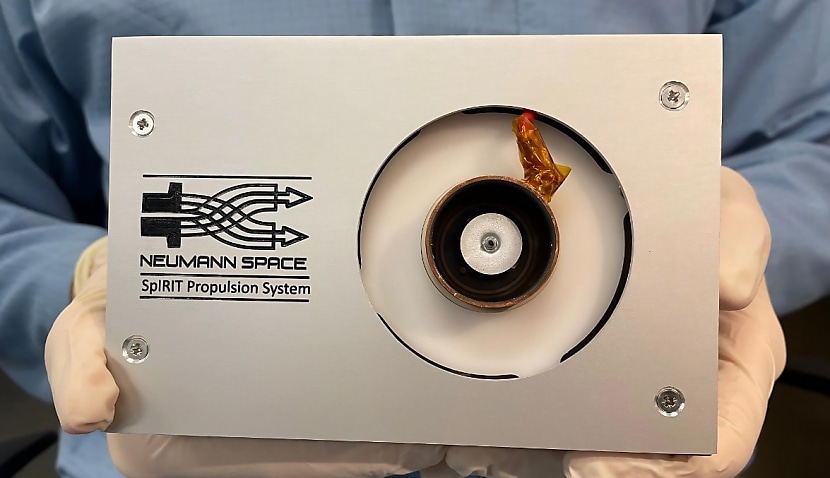
The South Australia-based company’s “Neumann Drive” is attached to the University of Melbourne’s SpIRIT nanosatellite, which blasted off last December.
This month, SpIRIT was able to charge the device’s power capacitors using its solar panels and batteries.
It also conducted several test firings, which significantly demonstrated that molybdenum could be used as a solid metallic propellant.
Neumann has previously said its electric technology is simpler than traditional chemical propulsion methods and allows for the potential for spacecraft to be effectively refuelled and deorbited easier. This includes harnessing space debris for fuel.
“The SpIRIT nanosatellite has been operating in orbit approximately 500 kilometres above Earth since its launch on 1 December 2023, during which time the consortium has worked to perform numerous diagnostic tests to validate the system’s electronics and, in doing so, confirm the resilience of the Neumann Drive to the challenging launch and orbital environments,” Neumann Space said.
“A comprehensive Neumann Drive testing campaign will continue for the remaining of the two-year SpIRIT mission, with the goal of establishing for the first time the long-term characterisation of the system in orbit.”
Enrico Palermo, head of the Australian Space Agency, said, “The agency congratulates Neumann Space and the SpIRIT team on this milestone, and we’re proud that our investment in this science mission continues to boost Australia’s space heritage.”
SpIRIT, meanwhile, aims to search for gamma rays. The 11.5-kilogram device deploys solar panels and thermal radiators to search for the elusive phenomenon created when stars die or collide.
The project – known in full as the Space Industry Responsive Intelligent Thermal nanosatellite – is a unique collaboration with the Italian Space Agency, which has created the scientific instruments on board.
Four years in the making, its solar panels power the “selfie stick” camera, guidance systems, and a pioneering electric propulsion system created by Neumann Space.
It’s designed to fly in low-Earth orbit for two years in a polar (or sun-synchronous) orbit, travelling “vertically” from north to south but positioned so it always faces the sun at a similar angle.
When its mission is complete, SpIRIT will be placed in a safe mode and burn up on re-entry into the atmosphere.
The project is a significant moment for the local industry, given it’s also a collaboration between Inovor Technologies, Neumann Space, Sitael Australia, and Nova Systems. The Australian Space Agency supported the project with almost $7 million in grants.

Adam Thorn
Adam is a journalist who has worked for more than 40 prestigious media brands in the UK and Australia. Since 2005, his varied career has included stints as a reporter, copy editor, feature writer and editor for publications as diverse as Fleet Street newspaper The Sunday Times, fashion bible Jones, media and marketing website Mumbrella as well as lifestyle magazines such as GQ, Woman’s Weekly, Men’s Health and Loaded. He joined Momentum Media in early 2020 and currently writes for Australian Aviation and World of Aviation.
Receive the latest developments and updates on Australia’s space industry direct to your inbox. Subscribe today to Space Connect here.











